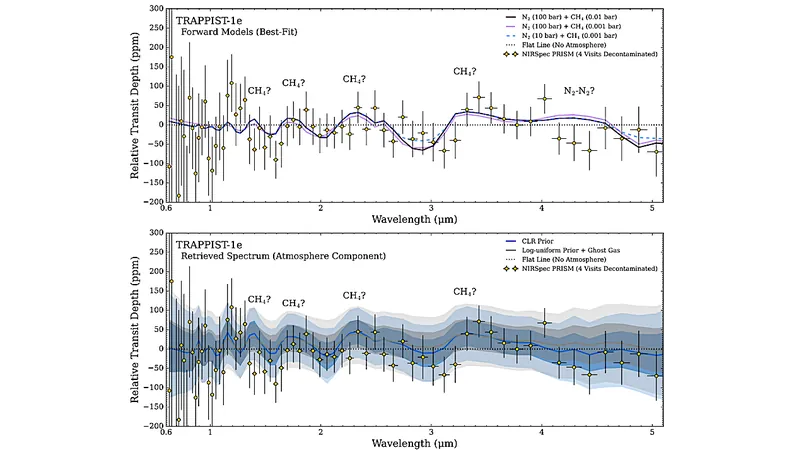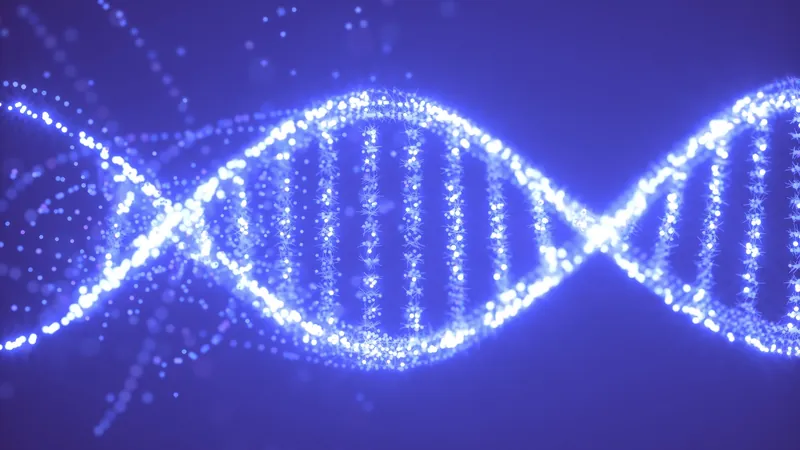
Unlocking the Secrets of TRAPPIST-1e: Is This Exoplanet Supporting Life?
2025-09-09
Author: Nur
The TRAPPIST-1 system could be the gateway to discovering potentially habitable worlds beyond our solar system. Among its intriguing planets, TRAPPIST-1e stands out as a prime candidate that might harbor liquid water on its surface—if conditions are just right.
Recent findings from the James Webb Space Telescope (JWST) are shedding light on this enigmatic planet. The first transmission spectra of TRAPPIST-1e revealed unexpected stellar contamination that fluctuated during four observational sessions. This has prompted an extensive investigation into the types of atmospheres that might exist on TRAPPIST-1e.
The research team employed sophisticated modeling techniques to evaluate numerous atmospheric scenarios. While they haven't definitively confirmed the presence of an atmosphere, their results suggest that dense CO2-rich atmospheres akin to those on Venus and Mars are unlikely—though not completely ruled out. Interestingly, atmospheres rich in nitrogen with smaller amounts of CO2 and methane are still permissible by the data.
Both the bare rock and N2-rich atmospheric models fit the available data, yet they fall short of accounting for all observations. This discrepancy might arise from lingering stellar contamination or the potential presence of unique atmospheric signals. Fortunately, future JWST observations of TRAPPIST-1e, especially during consecutive planetary transits, promise to refine our understanding of its atmospheric conditions.
This groundbreaking study forms part of the ambitious DREAMS (Deep Reconnaissance of Exoplanet Atmospheres through Multi-instrument Spectroscopy) initiative, aimed at unraveling the mysteries of exoplanet atmospheres. As we continue to explore the universe, TRAPPIST-1e could very well be a stepping stone toward discovering extraterrestrial life.



 Brasil (PT)
Brasil (PT)
 Canada (EN)
Canada (EN)
 Chile (ES)
Chile (ES)
 Česko (CS)
Česko (CS)
 대한민국 (KO)
대한민국 (KO)
 España (ES)
España (ES)
 France (FR)
France (FR)
 Hong Kong (EN)
Hong Kong (EN)
 Italia (IT)
Italia (IT)
 日本 (JA)
日本 (JA)
 Magyarország (HU)
Magyarország (HU)
 Norge (NO)
Norge (NO)
 Polska (PL)
Polska (PL)
 Schweiz (DE)
Schweiz (DE)
 Singapore (EN)
Singapore (EN)
 Sverige (SV)
Sverige (SV)
 Suomi (FI)
Suomi (FI)
 Türkiye (TR)
Türkiye (TR)
 الإمارات العربية المتحدة (AR)
الإمارات العربية المتحدة (AR)